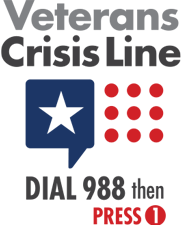
Provider Pulse
January 2019
Welcome to 2019!
As we move into the New Year, TriWest has made some changes to the authorization letter notification as well as uploading medical documentation processes. As we noted in last month’s Provider Pulse, we moved our webinars to the Availity platform and have updated the webinar schedule. In other news, we offer some insight into the Standardized Episodes of Care (SEOCs), resources to help you the fight in the opioid crisis, and discuss the name change for Secondary Authorization Requests (SAR). Read all about these updates, and more, below.
In This Edition:
Changes Coming to Authorization Letter Notification
Based on feedback TriWest Healthcare Alliance received from multiple provider offices, TriWest will make the following change to authorization notification timelines as of February 8, 2019 – your authorization letter will be sent to you the day after the Veteran’s appointment is made. Before this, we sent you the authorization letter five (5) days prior to the Veteran’s appointment since some providers had wanted it sent closer to the appointment date, but this does not meet the needs of the majority of providers.
As a reminder, you can always see the referral/authorization on the Provider portal at www.triwest.com/provider once the appointment is made, and you will still be able to access the Department of Veterans Affairs (VA) Consult on the day of appointing by logging onto your secure account on TriWest’s Provider Portal.
Adjustment to Medical Documentation Uploading
Providers in the VA Patient-Centered Community Care (PC3) program are now able to upload their medical documentation directly to VA. The medical documentation will now be available to VA without delay. This change was effective January 4, 2019.
The only difference in the process is that you will select the date range that corresponds to the actual dates of service. Intermediate documents are not needed and you may load your first medical document as “initial.” Files must be less than 25 MB and be in either PDF or TIF formats.
Updated TriWest Webinar Schedule
We have a new schedule for live, interactive webinars on VA’s PC3 and VCP/Choice programs. These include expansion education webinars for Regions 1, 2 and 4 (former Health Net regions) as well as existing education for Regions 3, 5 and 6, through March 2019. View a map of PC3 and VCP Regions.
These webinars can be accessed on our new TriWest Learning Center on our Availity®* Payer Space at www.availity.com as well as www.triwest.com/provider. To sign up for webinars:
- Go to www.availity.com.
- Click Login to log in to the Availity Provider Portal.
- In the portal, click Payer Spaces | TriWest.
- On your TriWest Payer Space page, Applications tab, click “TriWest Learning Center”.
- Sign up for the webinar(s) of your choice.
Last fall, TriWest agreed to support VA in administering PC3 and VCP/Choice nationwide after Health Net Federal Services’ (HNFS) contract ended Sept. 30, 2018. TriWest is offering specific expansion training to new providers in expansion Regions 1, 2 and 4 via the TriWest Learning Center on Availity.
As a new provider in an expansion Region, some of the VA processes and procedures will differ for you. Specifically, the processes for appointing and medical documentation returns are different in the expansion Regions. Please take an expansion-related training webinar to become familiar with these procedures.
The expansion processes do not apply to existing providers within TriWest’s original operating areas (Regions 3, 5, and 6). Therefore, if you’re an existing provider in TriWest’s original operating area, do not sign up for the expansion-specific training.
*Availity is a registered trademark of Availity, LLC | All Rights Reserved
A Better Understanding of SEOCs
TriWest and VA put into effect a different model of ordering health care called Standardized Episodes of Care or SEOCs. The creation of SEOCs was driven by VA’s desire to improve consistency across all VA Medical Centers (VAMC), decrease the administrative burden for providers, reduce the amount of paperwork, and improve the continuity of care for Veterans.
SEOC templates expand the authorized services and clinical components for the specialties to make them more comprehensive, ensuring all the elements and aspects of an approved service remain the same. Each specialty has its own SEOC template authorizing a standardized, minimum amount of care that can be rendered when medically necessary.
VA has been converting its authorizations to SEOC formats by specialty type; however, not all authorizations have been converted yet. How do you know if you have a SEOC authorization? Your authorization will have a bolded call-out that clearly states “SEOC” on your authorization. If you don’t see an SEOC call-out on your authorization, then your authorization hasn’t been converted yet. So please review your authorizations closely. To determine whether you have an SEOC, review our SEOC Quick Reference Guide for Regions 3, 5 and 6.
We understand that SEOCs are a different model of receiving authorizations. If you have questions and would like to become more familiar with SEOCs (including how to read a SEOC), consider taking a TriWest webinar or reading the March 2018 edition of Provider Pulse.
Please remember that when you see a Veteran, and provide the care consistent with the Veteran’s medical issue or condition, you should only bill for the actual services that were clinically required, and performed. Sometimes, the SEOC may approve more care than your office needs to provide, but you should only bill for the services that were medically necessary and performed for a single episode of care.
Here are some other resources specific to SEOCs that may help you:
- SEOC webinar (live and interactive)
- SEOC Quick Reference Guide for Regions 3, 5 and 6
- SAR Decision Tool
- SAR Quick Reference Guide for Regions 3, 5 and 6
Resources Available to Fight the Opioid Crisis
In 2017, President Trump directed the Department of Health and Human Services to declare the opioid crisis a public health emergency, which impacts all Americans including our Veterans. TriWest is working in partnership with VA to spread awareness, education and information to our provider network about this issue.
VA recognized the clinical challenges to successfully managing pain for our Veterans and therefore implemented the Opioid Safety Initiative (OSI) Directive and the Informed Consent Directive. The resulting Opioid Safety Initiative Toolkit contains documents and presentations that can aid in your clinical decisions about starting, continuing, or tapering opioid therapy, as well as other challenges related to safe opioid prescribing.
Some VAMCs handle the opiate prescribing process themselves and only request interventional therapies when they refer for pain management. Be sure to clarify what is authorized before you discuss initiating or changing the dosage on opiates for a Veteran.
Visit the TriWest Opioid Resource Page
To assist in this effort, we created a resource page on the TriWest website. Here you will find various documents, web pages and other resources provided by VA or other government institutions.
In addition, here are eight additional resources for providers who prescribe opioids:
- Centers for Disease Control and Prevention (CDC) Guideline for Prescribing Opioids for Chronic Pain: Recommendations
- Safe and Responsible Use of Opioids for Chronic Pain – A Patient Education Guide
- Opioid Safety with VA/DoD Clinical Practice Guidelines
- Opioid Safety – Clinical Tools
- Opioid Safety – Provider Education
- CDC Interactive Training Webinar
- Opioid Safety Toolkit
- Opioid Therapy Pocket Guide
We trust you will find these tools useful for your clinical teams caring for Veterans with chronic pain.
Name Change for Secondary Authorization Request (SAR)!
A name change is coming to Secondary Authorization Requests (SAR). This year, VA may start referring to SARs as a Request for Service (RFS). Therefore, you might start seeing TriWest refer to SARs as SAR/RFS. But while the acronym is changing, the requirements for getting care pre-authorized are not.
When Do You Need a SAR/RFS?
Remember that the reasons you need to submit a SAR/RFS to TriWest include:
- If a Veteran needs additional care from another provider with a different Tax ID Number (TIN);
- If a Veteran needs continued care outside the authorized date range;
- Or if a Veteran needs additional services not included on the authorization letter, SEOC, or in the attached VA documentation.
For example, the physical therapy SEOC allows for 14 visits over 90 days. If the provider determines additional visits/time is needed, the provider needs to submit a SAR/RFS.
Upcoming Provider Handbook Changes
Upcoming Changes for February 2019:
- Throughout the handbook, the term “overseeing VA Medical Center” was changed to “authorizing VA Medical Center” to reflect language consistency with other training.
- A new regional map was created on Page 5 to reflect the new TriWest expansion across the entire United States. You can now view existing regions (Regions 3, 5 and 6) and expansion regions (Regions 1, 2 and 4).
- A new section was added on Page 9 to describe the appointing and authorization process for Regions 1, 2 and 4. TriWest’s historic regions (Regions 3, 5 and 6) do not have any changes to processes.
- A new section and graphic were created on Page 10 to reflect updates to the appointing and authorization process in Regions 1, 2 and 4 in the TriWest expansion areas.
- Minor language changes were made to Page 14 to better direct providers where to submit medical documentation for each Region. For providers in the expansion regions (1, 2 and 4), all documentation must now be submitted directly to the authorizing VA Medical Center.





